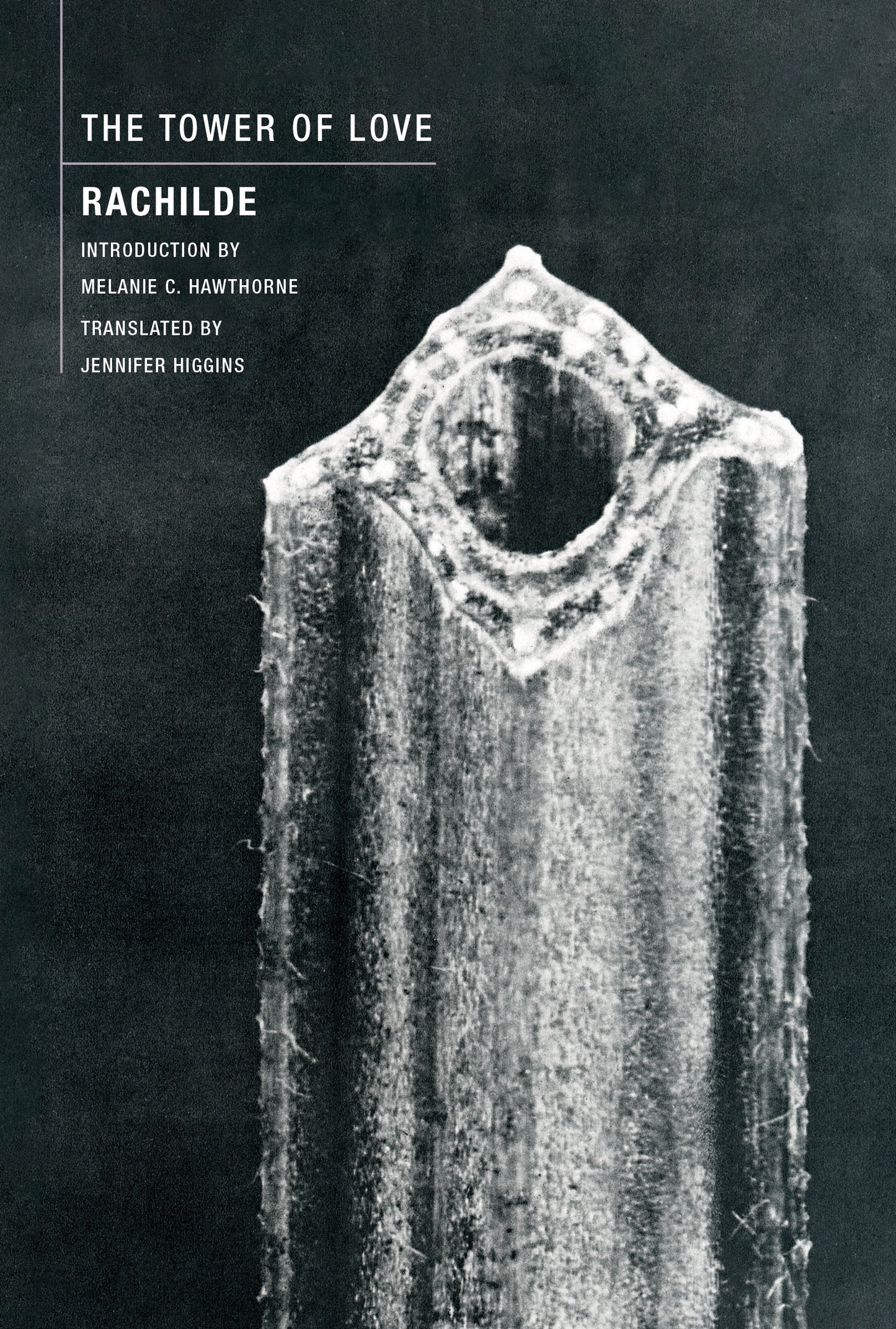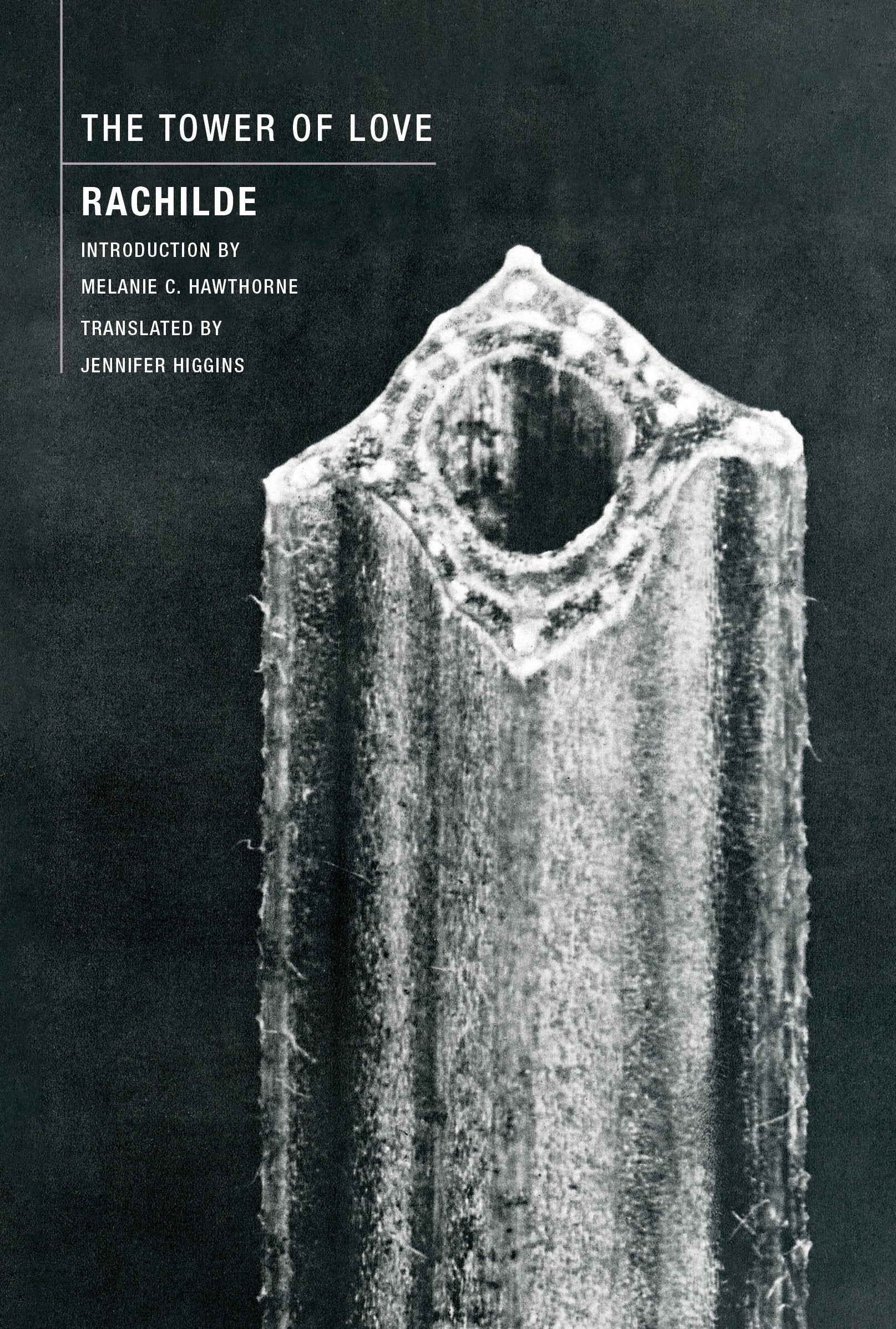The Tower of Love
The Tower of Love
Rachilde
Couldn't load pickup availability
Translated by Jennifer Higgins, with an introduction by Melanie C. Hawthorne / November 2024 / 5.375 x 8, 176 pp. / 978-1-962728-00-3
When Jean Maleux, a young, naïve sailor, is appointed assistant keeper of the Ar-Men lighthouse off the coast of Brittany, he is drawn into a lonely, dark world of physical peril, sexual obsession, and necrophilia. The lighthouse is a chamber of locked doors and terrible secrets—and home to the eccentric, embittered keeper he is to assist, Mathurin Barnabas: an illiterate, irascible, and grizzled old man who appears to be more animal than human.
Time passes in alternating stages of mind-numbing monotony and bouts of horror as our hero struggles against the endless assaults of wind and loneliness, with only his duties, his mind fraying with guilt, and his mute companion for distraction. The sea evolves into a wild force and the lighthouse itself into a monster that Jean must tame if he is to survive.
First published in French in 1899 and never before translated, this gripping novel retains its shock value even now, and will be of keen interest to readers of Decadence, Symbolism, and Romantic horror fiction.
Press
—John Taylor, Times Literary Supplement


